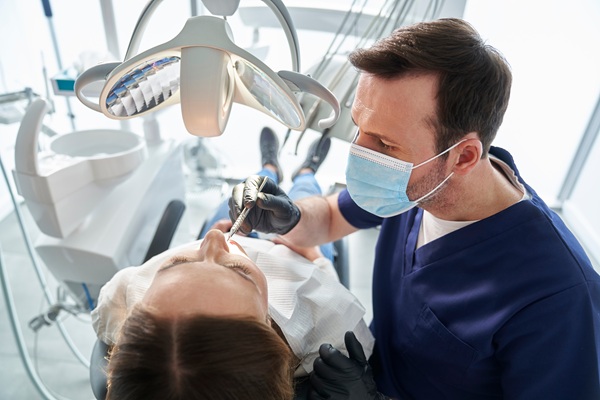Missing Tooth FAQs

Whether you have always had a missing tooth, are preparing to have a tooth removed or need to know what to do after losing one due to injury, chances are good that you have some questions. A missing tooth is a fairly common issue, and staying informed can help with formulating a plan to resolve the situation and return to normal.
What causes missing teeth?
According to the American College of Prosthodontics, there are three common causes of missing teeth.
Genetic conditions
Sometimes, people are born with some of their teeth missing. When the missing teeth are due to genetics, the trait is usually seen in multiple family members. It is possible to be born without any particular tooth due to genetics, but this condition more commonly affects certain teeth:
- Upper lateral incisors (the teeth on either side of the front teeth)
- Wisdom teeth
- Second premolars (either on the upper or lower jaw)
Tooth decay
Often, tooth decay starts with a cavity. When a dental cavity is not treated quickly, bacteria continue to eat their way deeper into the tooth. A very decayed tooth can sometimes be effectively treated with a root canal. In severe cases, the tooth may be too decayed to save, and the entire tooth will need to be removed.
Gum disease
A missing tooth can sometimes be caused by gum disease. Gum disease makes the bone in the jaw deteriorate. When that deterioration is significant, it can result in tooth loss.
How can a missing tooth be treated?
A missing tooth often impacts someone's smile. Even if the missing tooth is farther back in the mouth, it may cause issues with chewing or even with facial structure. The American Dental Association recommends three procedures for replacing missing teeth.
Implants
Placing an implant is usually a multistep surgical procedure, but the end result is the most similar to a natural tooth. First, a metal rod (usually titanium) is placed in the jaw. It acts as a replacement tooth root. Then a crown is attached. These artificial teeth are made to match the other teeth in a patient’s mouth.
Fixed bridges
This solution also takes multiple steps. It uses two existing teeth to support a replacement tooth. A dentist or oral surgeon prepares two teeth on either side of the missing tooth, which usually involves shaping them to support crowns. The crowns are placed over the prepared teeth, and then an artificial tooth, called a pontic, is fused to both. This solution helps patients avoid having an implant placed.
Removable partial dentures
These dentures are typically made of high-quality plastic. They clip onto existing teeth, and they can be removed for cleaning. Usually, dentists recommend that patients do not wear removable partial dentures all day; they are often taken out when patients go to sleep and then replaced in the morning.
Conclusion
Dealing with a missing tooth can be challenging, but a dental professional can help patients decide on the appropriate course of treatment. A quality replacement tooth allows patients to quickly regain a natural, beautiful smile.
Request an appointment here: https://www.oaktreefamilydental.com or call Oak Tree Dental at (703) 763-5239 for an appointment in our McLean office.
Check out what others are saying about our services on Yelp: Read our Yelp reviews.
Recent Posts
When many people lose a single tooth, they may be inclined to ignore it and be grateful for the remaining thirty-one — despite the difficulties such a loss can cause. The good news is that getting a partial denture for one missing tooth is a relatively straightforward and largely painless procedure. Although you may experience…
Professional dental cleanings are integral for keeping your mouth healthy. They remove plaque and tartar (hardened plaque) that regular brushing and flossing cannot, leaving your teeth and gums refreshed. Maintaining healthy habits that keep your smile bright and strong is essential to make the most of a dental cleaning. Caring for your teeth properly after…
When it comes to replacing teeth, some people feel it is unnecessary to get a partial denture for one missing tooth. However, even one missing tooth can cause severe damage to the rest of the mouth and even lead to behavioral issues such as embarrassment or loss of confidence if it is not replaced with…
If you have a gap in your teeth, you may want to consider a partial denture for one missing tooth. The gap may be affecting your appearance and lowering your self-confidence. Even if the missing tooth is in the back and is not very noticeable, it is important to replace it because there are long-term…


